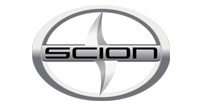We believe fair prices, superior service, and treating customers right leads to satisfied repeat buyers.
View Inventory Get Directions Acura (1)
Acura (1)
 Audi (10)
Audi (10)
 Bentley (1)
Bentley (1)
 BMW (11)
BMW (11)
 Buick (1)
Buick (1)
 Cadillac (7)
Cadillac (7)
 Chevrolet (3)
Chevrolet (3)
 Chrysler (3)
Chrysler (3)
 Dodge (9)
Dodge (9)
 Fiat (3)
Fiat (3)
 Ford (19)
Ford (19)
 GMC (1)
GMC (1)
 Hino (1)
Hino (1)
 Honda (6)
Honda (6)
 Infiniti (2)
Infiniti (2)
 Jaguar (5)
Jaguar (5)
 Jeep (2)
Jeep (2)
 Kia (2)
Kia (2)
 Land Rover (1)
Land Rover (1)
 Lexus (18)
Lexus (18)
 Lincoln (1)
Lincoln (1)
 Maserati (2)
Maserati (2)
 Maybach (1)
Maybach (1)
 Mazda (14)
Mazda (14)
 Mercedes-Benz (15)
Mercedes-Benz (15)
 MINI (1)
MINI (1)
 Nissan (3)
Nissan (3)
 Pontiac (1)
Pontiac (1)
 Porsche (5)
Porsche (5)
 RAM (3)
RAM (3)
 Scion (1)
Scion (1)
 Smart (1)
Smart (1)
 Subaru (4)
Subaru (4)
 Toyota (12)
Toyota (12)
 Volkswagen (7)
Volkswagen (7)